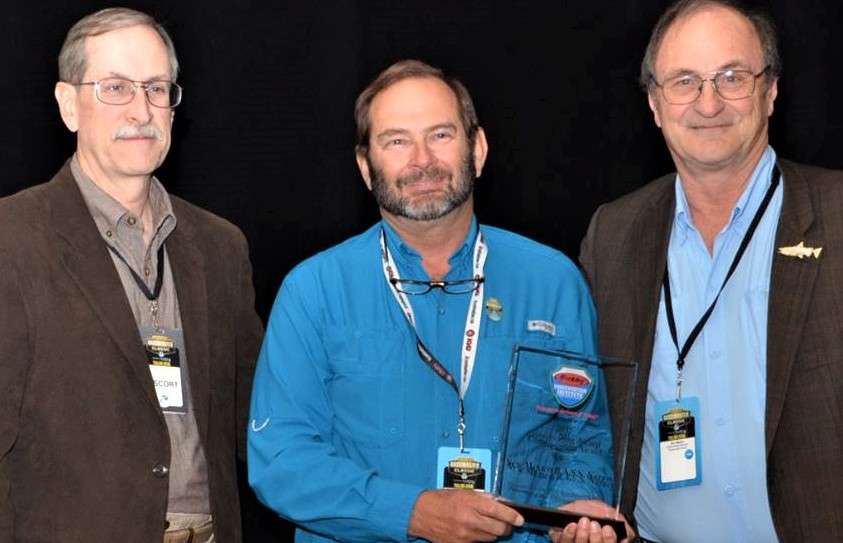
ALBUQUERQUE, N.M. – Being the guiding force for what probably is the largest volunteer-led habitat project on a public water is enough to keep two or three normal people busy.
But not New Mexico Conservation Director Earl Conway, who also serves as president of the state’s B.A.S.S. Nation (NMBN). Bringing back Elephant Butte, a once renowned bass fishery, and tracking progress with his Adapt-a-Cove Facebook page certainly are priorities. But they are not the singular focus of this father of four and member of the Albuquerque Hawg Hunters.
“Working with the Navajo tribe at Morgan Lake and the Cochiti tribe at Cochiti Lake also has been rewarding,” said the B.A.S.S. member since 1984. “There is still a lot to be done in that area, and I am working with the Southwest Tribal Fisheries Committee to find more opportunities.”
Conway also has made youth involvement a priority.
“What really makes me proud is the number of youth that we have been able to reach through these projects, providing them with day trips, equipment for their science classrooms, and some really challenging problems to solve.
“Many of the students are involved in projects or working on their wildlife management or science degrees.”
Along with Elephant Butte, one of his biggest challenges since becoming conservation director in 2009 was building a mutually beneficial relationship with the New Mexico Department of Game and Fish (NMGF).
“You only get out of the position what you are willing to put in to it,” Conway explained. “It really helps if your local game and fish people are active and willing to support conservation activities.
“In New Mexico that was not the case and a major part of the job has been just turning that around. The ideal partnership is for us to assist the professionals in projects and initiatives, but the position will be completely different in every state depending on the local situations.
“In New Mexico we had to take the lead and set a good example.”
A bass hatchery is one of the benefits that Conway would like to see evolve from the Nation’s relationship with NMGF. Right now, the state must barter with other states to obtain fish, with Montana proving an especially helpful partner.
“But New Mexico needs a large hatchery,” the conservation director said. “Recent studies have shown that hatchery fish make up the majority of the fish in Elephant Butte, which seems to indicate that there is a much larger impact on irrigation reservoirs where the natural spawn is hurt by spring drawdowns.”
Conway also is working with irrigation districts to establish minimum pools to benefit the economic and recreational value of sport fisheries and encouraging anglers to maintain vigilance in keeping invasive zebra and quagga mussels out of state waters.
“We continue to push for clean, drain and dry boats through constant reminders and cooperation with the state AIS (Aquatic Invasive Species) coordinator,” he said.
Destroying habitat and spawning areas in several fisheries, sedimentation is another concern.
“Forest fires in the watersheds have exacerbated this situation with miles of inlets being filled with sediments that re-suspend during the spring,” Conway explained. “Our efforts now include working with the soil conservation districts, the National Forest Service and the Bureau of Land Management to reduce erosion upstream of the reservoirs.”
Conway’s objectives as a conservation director are clearly evident through his work: developing partnerships with state and federal agencies, partnering with schools and youth to ensure conservation leaders for the future, and reaching out to non-tournament anglers and nonprofits who share goals and concerns.
Finally, he wants to “provide volunteer leadership in warm-water fishery access and sustainability, and never waste a volunteer’s time.”
The 2014 B.A.S.S. Nation Conservation Director-of-the-Year receives high praise from B.A.S.S. national conservation director Gene Gilliland. “Earl was a rocket scientist – really – he was a practicing mechanical engineer. And as an engineer he took a very logical and practical approach to solving problems but was not afraid to think way outside the box. He formed partnerships, brought in the youth,scrounged for materials and raised pretty significant amounts of money for the Elephant Butte project – all while doing his day job. But Earl recently retired so look out! I can’t imagine how much more he will be able to get done on behalf of fishing in New Mexico.”





